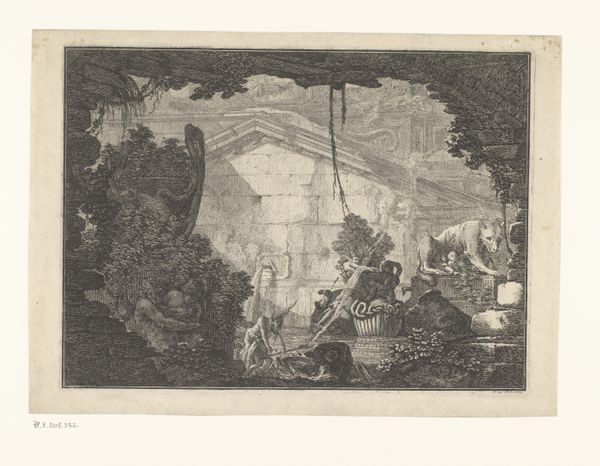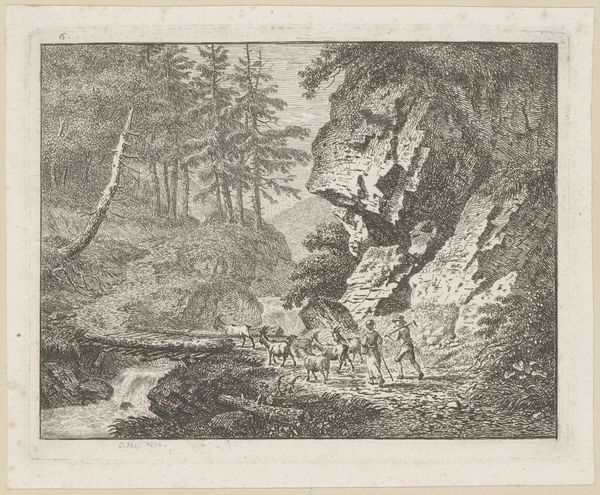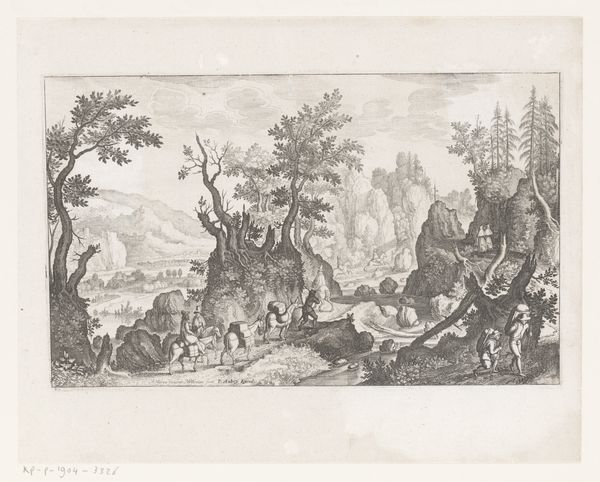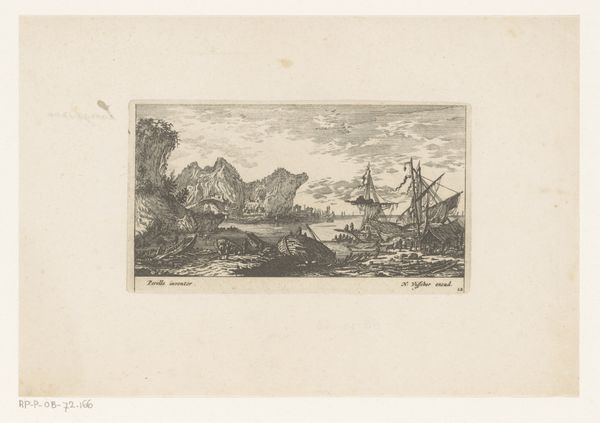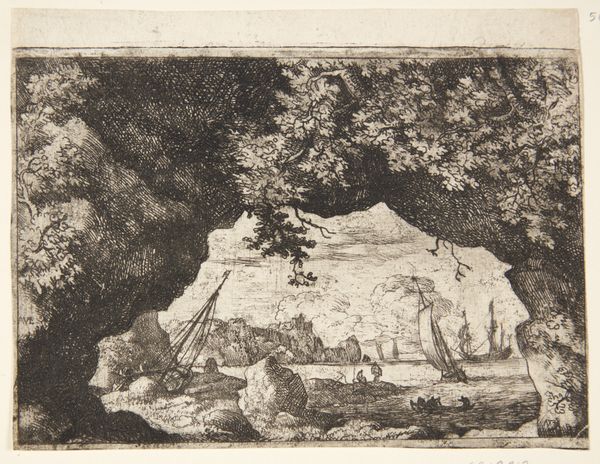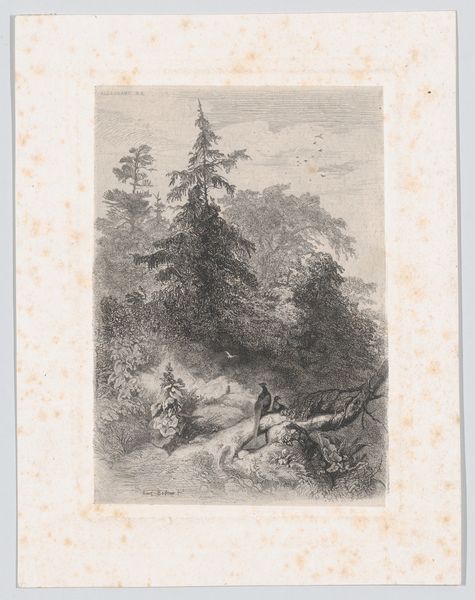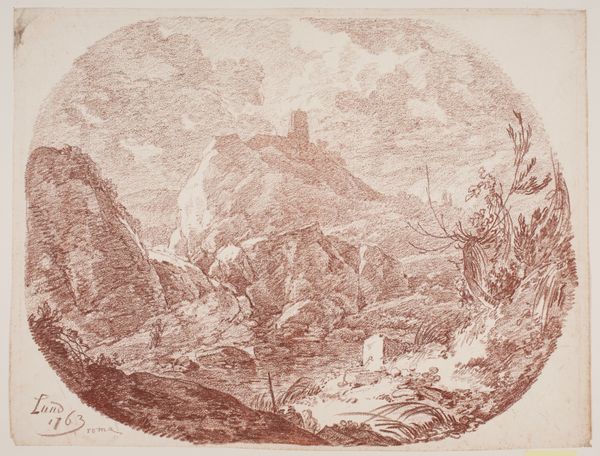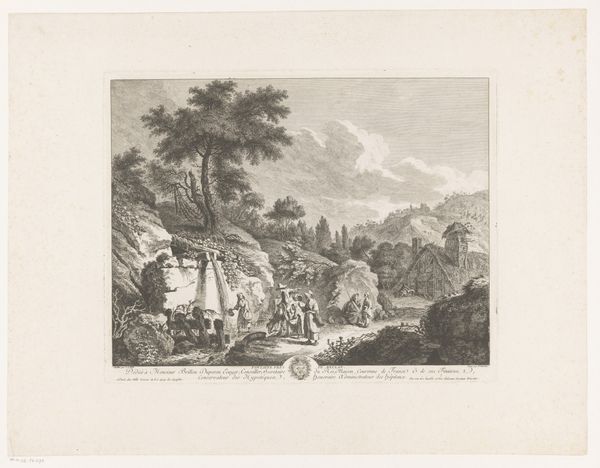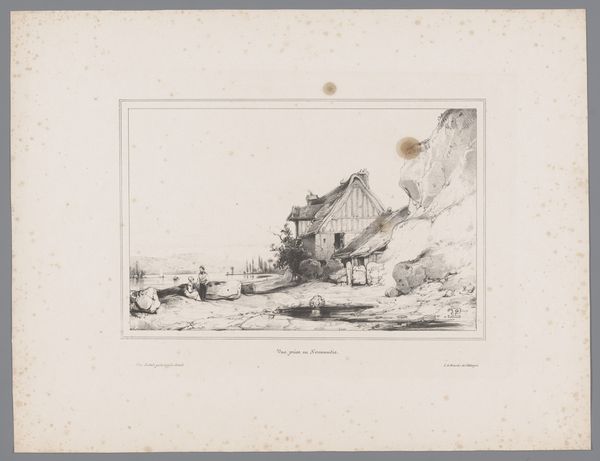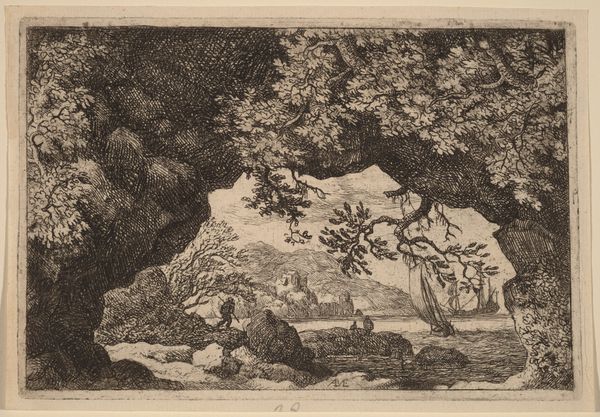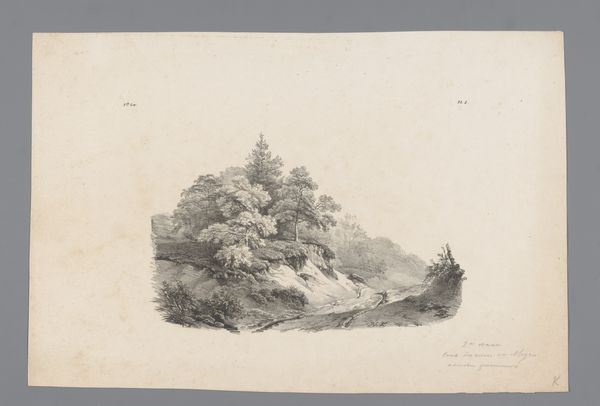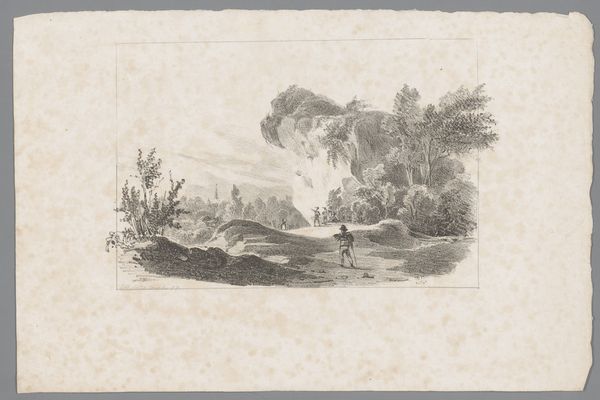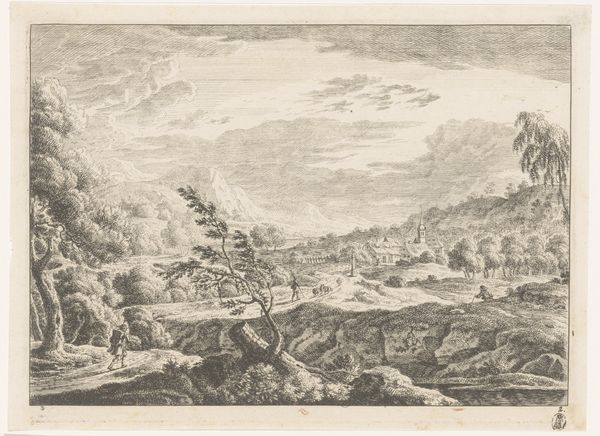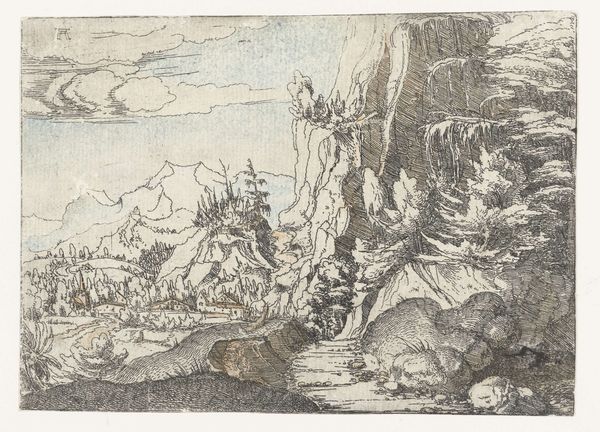
print, engraving
# print
#
landscape
#
romanticism
#
line
#
engraving
#
watercolor
Dimensions: 225 mm (height) x 260 mm (width) (plademaal)
Curator: This is Just Mathias Thiele’s 1832 engraving, “Mountainous Landscape Near Seefeld Monastery.” It’s a piece that really captures the Romantic era’s fascination with nature's grandeur. Editor: The first thing that strikes me is the intense detail for such a small print. The labor involved! You can almost feel the texture of the rock face, see every tiny branch on those conifers. Curator: Precisely! Thiele, as a figure tied to the burgeoning national romanticism, saw landscapes as reflections of national identity. This depiction of Seefeld, with its imposing mountain and nestled monastery, evokes a sense of awe and spiritual connection to place. It's no mere landscape; it’s an assertion of belonging. Editor: And how those lines delineate social space! The small building suggests an ordered agricultural life in stark contrast to the rugged, seemingly untouched peaks and cliffs looming overhead. One wonders about the production of the ink, the paper; where they sourced, who manufactured. All material and labor present or absent from the image itself, yet crucial to its existence. Curator: The monastery itself also reflects a certain degree of power, both in its location and size, dominating over the natural forms, creating an image of national strength during that time. It echoes the rise of Denmark in that period and, thus, it was essential to depict Denmark through heroic landscapes. Editor: I am most intrigued by the linear aesthetic—evoking the craft traditions so embedded in the making. But the way the light is captured, almost photographically, suggests modernity knocking. Curator: Indeed, Thiele was keen on promoting Danish art and culture through images that resonated with a growing sense of national pride. That being said, I really admire this piece and how the elements of landscape can reveal cultural identity and artistic purpose. Editor: I appreciate how thinking through its creation pushes us beyond seeing the picturesque to interrogating art’s grounding in social relations. Every line here is not only part of an aesthetic experience but a record of labor and material use, thus impacting the understanding of cultural values and context.
Comments
No comments
Be the first to comment and join the conversation on the ultimate creative platform.
